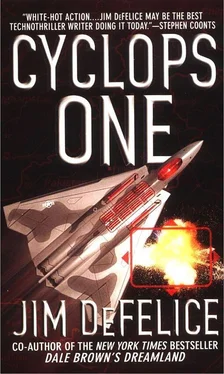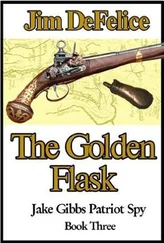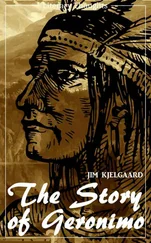He saw a dozen girls he should have laid but hadn’t.
That was how he knew he wasn’t going to die. If he’d been about to buy it, he’d have seen a shadowy figure standing in front of a long tunnel, just as all those near-death books and movies claimed.
That, or a babe with serious knockers leading him to hell.
McIntyre pushed with his arms and legs, trying to lift the metal from around him. He pushed through the darkness, working his way in the path of least resistance. He began to feel cold. Several times the blackness closed around him and his head floated away from his arms and legs. At some point he realized he was on the ground outside of the wreckage.
His legs and arms felt stiff, and his neck buzzed with whatever he’d done to it. But he was free, he could move; he pushed over and sat up.
There was a rifle near him, a Russian Kalashnikov.
He reached for it. His hand moved in slow motion. When he finally touched it the metal seemed on fire. He pulled the gun toward him, used it as a crutch to get to his feet.
The helicopter lay a few yards away, nose-first against the side of the hill. There were people outside, near the door: bodies, none moving. He took a step forward, saw a man next to him: Captain Jalil.
The bastard who had kidnapped him.
McIntyre swung the rifle up and crashed it down on Jalil’s head. The Indian fell straight down. McIntyre swung again, hitting the back of his skull so hard that he felt something crack inside it. Surprised at his strength and the ferocity of his anger, he knelt over the captain. Blood streamed from his ears and mouth; the man was dead.
Something moved near the helicopter. McIntyre heard a shout. He grabbed the rifle right-side up, pulled it to his side and fired into the thick of the shadow as he turned around.
The shadow fell away. But rather than going over to make sure the soldier was dead — rather than getting up and seeing if any of the others were alive — McIntyre sat next to Jalil’s lifeless body.
“Why did you want to kill me?” he asked. “Why? Why kill anyone?”
Then he collapsed, unconscious, his chest landing on the motionless remains of his enemy.
McIntyre’s body transformed itself in the dazed nightmare of his troubled sleep. His arms became long icicles, and the back of his head swelled larger and larger until it lifted him up from the valley, sending him soaring through the darkness. He saw himself, then saw women — beautiful, gorgeous women in an endless parade, traveling through the rift in the mountains.
A gust of wind took him and spun him around; he woke to find himself sitting against part of the damaged helicopter’s tail. It was now mid-morning.
His first thought was: I’m in real shit.
His second thought was: Damn it’s cold.
His third: I have to take the world’s biggest leak.
McIntyre could do something only about the last. He rose, unbending unsteadily, then walked a few yards away. He remembered bashing his captor’s head and body; had it been part of the dream?
His hands were covered with blood, so he knew it had to have been real. Still, he couldn’t quite prepare himself for what he saw when he went back. He pushed it over, avoided looking at the battered face as he searched for his satellite phone.
He found a photo in one of the pockets. McIntyre threw it aside without looking.
Someone groaned from inside the helicopter. McIntyre steeled himself, continued searching. There were papers, a very small pistol; the phone had been tucked into the Indian’s hip pocket and was still warm.
There was another moan. Worried that some of the men might be alive, he took the phone and jammed it into his back pocket. An assault rifle sat on the ground; McIntyre stooped to pick it up. Blood rushed from his head; dizzy, he put his hand out and dropped the phone into the dirt.
The helicopter’s cockpit had been crushed, but the rear compartment was more or less intact. The side door had been torn off and there was a long, narrow hole running back from it, as if it were a seam that had split. Five or six bodies lay nearby. One moved, then another.
McIntyre saw another rifle and two clips lying close to it. He grabbed them, then whirled, sensing someone was watching him. Once more the blood fled from his brain.
One of the Indian soldiers sat upright on the ground, propped against the helicopter, eyes open. McIntyre stared at him, not sure whether he was alive or not. He started forward, thinking of poking him with the gun. As he took a step something seized him — not fear, and not precisely anger, either, but something he couldn’t have defined. It made him press the trigger. Three bullets burst from the gun. One glanced off the helicopter near the man’s shoulder and the others completely missed, McIntyre’s aim thrown off by the recoil. But though he hadn’t been hit, the man slumped over and fell to the side. He’d already been dead.
McIntyre stripped off the soldier’s bulletproof vest. There were grenades in it, two hooked into small pockets in the front and two more clipped on the top. The tops were taped so they wouldn’t accidentally explode. There were several clips of ammunition for the rifle as well.
Someone started talking inside the helicopter. It wasn’t a moan or a plea; McIntyre couldn’t make out the words or even the language, but the words had a calm, logical sound.
McIntyre took one of the grenades in his hand and held it. He started to push off the tape, thinking he’d blow up the helicopter, killing the men inside.
He’d expelled his anger, though. He didn’t want to kill; he just wanted to live.
He couldn’t think. He started to reel back and throw the grenade into the helicopter, then turned and threw it toward the rocks. His legs seemed to disintegrate; he pushed his body forward, sprawling and belatedly covering his head with his hands.
There was no explosion. He hadn’t set the grenade.
He had to get out of here.
McIntyre staggered, the rifles dragging over his shoulders as he began picking his way across and then down the slope, not sure which way he was going, only that he was moving.
They were beyond tired, all of them, but Howe needed to get it all sorted out. He rubbed his eyes, hunching over the map as Atta and the crew members of Cyclops Two slowly — painfully slowly — worked through the cockpit gear and replotted each strike on the paper map. The map was so large that it draped over the small folding table they were using; they had to push it up to get the last of their plots in. They’d taken out a total of thirteen Indian ballistic missiles and six Pakistani IRBMs, as well as two SAMs.
“This hit,” said Atta, pointing to the far side of the map, “was definitely not ours.”
“We’re assuming it’s a missile, not a shadow contact,” said Howe. “Or a dummy warhead.” He leaned back against the frame of the weapons operator’s seat, slightly hunched over despite the ample clearance on the flight deck.
“The other may be,” said Atta, “but this here is definitely a live warhead. And the strike pattern on the target is exactly like ours: tracking laser, then the hit.”
It had to be Cyclops One. The AWACS radar contacts were consistent with a 767. They had tracked the contact’s flight north, then lost it in the mountains east of Jammu. There had been a series of Indian SAM launches; it appeared that the plane had been shot down by a Trishul missile, though the data was inconclusive. It was possible that the NSA would be able to supply more data about that in a few hours, pending their own analysis of the battle.
Had the Chinese stolen the plane, then used it to help Pakistan? Or had the Pakistanis stolen it themselves, only to lose it in battle?
Читать дальше












